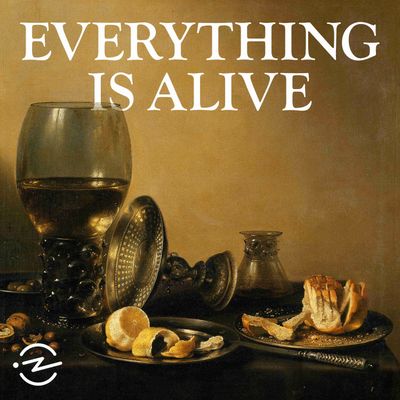
I’ll be honest: I thought I was going to hate Everything Is Alive, the latest podcast from the Radiotopia network. When I heard about the premise — an unscripted interview show in which all the guests are inanimate everyday objects, anthropomorphized by talented improvisers — the whole concept immediately struck me as too twee, too public radio, too Marie Kondo. Not that there’s anything particularly wrong with those things. It just felt a tad bit too derivative. Don’t we already have 99% Invisible?
Of course, I’m full of it, and one should never be held up by untested gut impressions. Sure, the podcast is indeed twee and public radio-ish and Marie Kondo-esque. And yes, it does indeed contribute somewhat to the heightening of one’s appreciation towards commonplace things often taken for granted. But in the hands of host Ian Chillag, who wields an absolutely killer deadpan sensibility like a scalpel, Everything Is Alive is something much more unexpected.
Its unexpectedness, I think, has almost everything to do with how Chillag gets at the innate melancholia that governs the fate of everyday objects. A soda can, a lamp post, a pillow: These things are built to be used, to be peripheral details in someone else’s life. The conceit of grafting a personality onto these objects seems charming on its face, but the real magic trick lies in the show’s move to further lump on a sense of personhood. For those who had a philosophy phase, this construction might evoke the old Sartre nut of existence preceding essence, albeit twisted around and carried out to its logical end by a troupe of improvisers. What does it mean to be a thing, when that thing’s entire purpose is to be used? Somewhere between deeply depressing and surprisingly enviable, that’s what.
The debut installment, featuring a soda can played by the writer-performer Louis Kornfeld, is the purest embodiment of this idea. (It also remains Everything Is Alive’s best episode.) Over the course of an exceedingly polite interview, Chillag and Kornfeld mine considerable pathos from the contrast between the soda can’s fundamental hope for fulfilling its purpose (being consumed), its actual biography (largely being forgotten in the back of a refrigerator), and the comfort he now feels being a witness to the world around him. The improvised conversation is awkward, pitched, funny. But the punch comes at the end (spoiler warning): Chillag offers to drink Kornfeld’s can in a collaborative act of documentary investigation, which the latter accepts. The soda can is gently consumed, with a slight pause mid-drink for a quick check-in. The moment leans into its surreality. “Are you sweating?” Chillag asks. “Oh, with joy,” Kornfeld replies, with some discomfort. “Alright, I’m going to keep going,” Chillag says. “You go ahead and finish me off,” Kornfeld says. The episode ends in silence, as Kornfeld is no more. It is ridiculous, strange, a little touching. It is also mildly horrifying, in the way that Roald Dahl’s 1949 short story The Sound Machine is horrifying. In that story, a man invents a machine that lets him hear sounds at pitches previously inaccessible to human beings. He discovers a sonic world of agonized plants and trees, which scream at the pain of being trimmed, pruned, and axed.
Chillag is a staff producer on the public radio staple Wait Wait … Don’t Tell Me!, but he was also once one-half of the duo behind How to Do Everything, a shaggy and effortlessly charming podcast that seamlessly mixed polite absurdity, deadpan humor, and a love for random trivia.
That show was wound down in late 2016, but its DNA is strong in Everything Is Alive. The two podcasts even share interspersed interview segments that revel in their bizarro nature. (In the Kornfeld episode, that segment involves a man selling a package of radioactive sodas, nowadays defunct for obvious reasons. It both relates to the conversation and, as the show’s conceit goes, is 100 percent real.) As the host and improv facilitator of each episode, Chillag has an appealingly low-key demeanor befitting of his deadpan gifts. He’s always setting up, always giving, always sprinkling in extra detail. The reality-construction is exquisite, a testament to Chillag and his guests’ commitment to grounding the inherent absurdity of the show.
If there’s another noteworthy influence to the podcast, it might be — and this might be a stretch for some— Studs Terkel’s Working, the great oral historian’s 1974 anthology of longform interviews with ordinary people about their jobs and how they feel about them. That said, to bring up Working is to deepen the depressing implications of Everything Is Alive: How do we think about everyday people whose jobs and contributions to society are often unseen and unappreciated?
Everything Is Alive is a unique, quirky, and smart little package with a unexpectedly moving edge. It remains to be seen whether the podcast can sustain its high concept beyond a season without getting too repetitive, but for the moment, it’s doing some truly enjoyable things at just the right level of strange.





